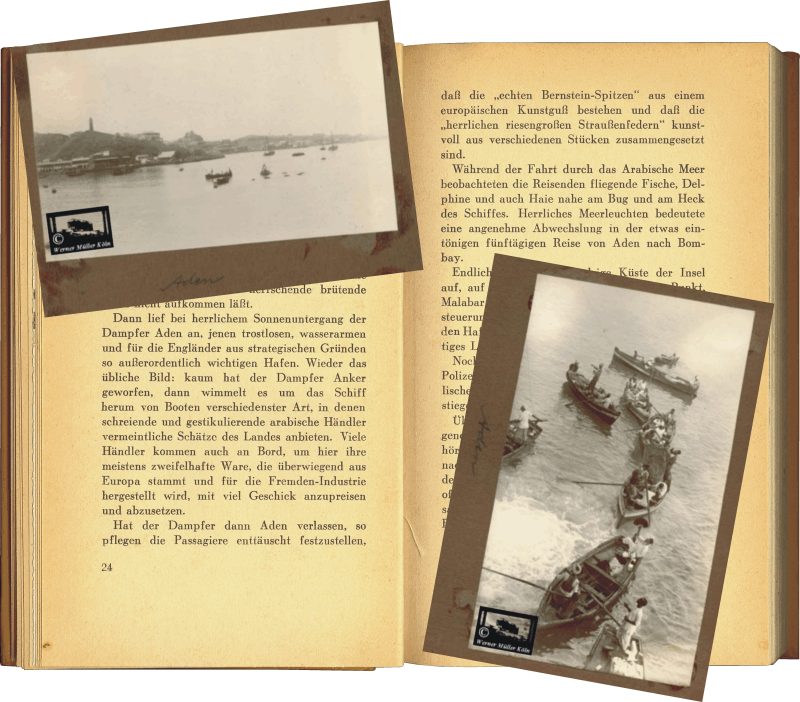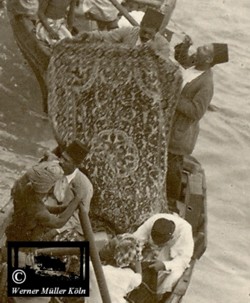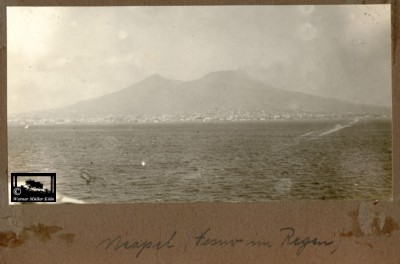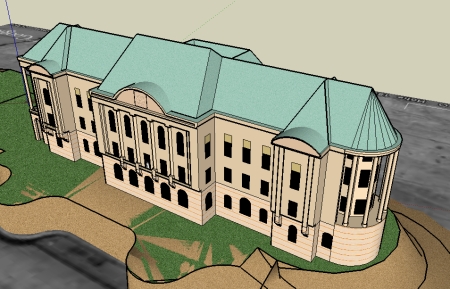 |
 |
 |
 |
 |
 |
 |
 |
 |
 |
 |
 |
 |
 |
 |
 |
 |
 |
 |
 |
 |
 |
 |
 |
 |
| |
|
|
King
Amanullah in Berlin |
|
|
|
|
| |
|
|
|
|
|
|
|
|
|
|
|
|
|
|
|
|
|
|
|
|
|
|
|
| Probably in the summer of 1927
(or 1926) my great-grandfather spent his vacation in Berlin. Since he had
made the first trip to Kabul by land via rail, he now probably chose the
other way home by ship. I can only guess this. How many times he had
vacation I do not know. One of his last photos shows Tehran from the air.
So he probably made the pictures shown here in 1926 on his way home to the
3-month holiday. |
| Dr. Gerber describes in his book
"Afghan Mosaics" during the steamer trip to Kabul the stay in Aden. As in
the description of the tower room, the story of Dr. Gerber and the
photographs by Wilhelm Rieck. |
|
|
| |
|
|
|
|
|
|
|
|
|
|
|
|
|
|
|
|
|
|
| |
|
|
|
|
|
|
|
|
|
|
|
|
|
|
|
|
|
|
 |
|
 |
|
|
|
|
|
|
|
|
|
|
|
|
"Aden" |
|
|
| |
One of the ostrich
feather sellers' clients was my great-grandfather, who bought a bundle of
about 30 ostrich feathers. As my mother says, my grandmother had a
carnival suit in the 1930s with these thirty ostrich feathers. Since it
would have been relatively difficult to get such a number ostrich feathers
in the Berlin of the 30s, it could have probably been traded ostrich
feathers from Aden. |
|
|
|
|
|
|
|
|
| |
|
|
| |
|
| |
|
| |
|
| |
|
| |
|
| |
|
| |
|
| |
|
| |
|
| |
|
| |
|
| |
|
|
|
|
|
| |
|
|
|
|
carpet dealer |
|
|
|
|
|
One
of the fan seller |
| |
|
|
|
|
|
|
|
|
|
|
|
|
|
|
|
|
|
|
|
| |
|
|
|
|
|
|
|
|
|
|
|
|
|
|
|
|
|
|
|
| |
|
|
|
|
|
|
|
|
|
|
|
|
|
|
|
|
|
|
|
|
|
|
|
|
|
| From Aden we went through the Red
Sea and through the Suez Canal. My great-grandfather called this trip
through the Suez Canal the most boring thing he has ever seen. From Suez
the steamer then drove through the Strait of Messina on Mount Vesuvius to
Naples. From there probably by train to Berlin. |
| |
|
|
|
|
|
|
|
|
|
|
|
|
|
|
|
|
|
|
|
|
|
|
|
|
|
 |
|
|
|
|
| |
|
|
| |
|
|
| |
|
|
| |
|
|
| |
|
|
| |
|
|
| |
|
|
| |
|
|
| |
|
|
| |
|
|
| |
|
|
| |
|
|
"Neaples
Vesuv in the raine" |
|
|
|
|
"Neaples" |
| |
|
|
|
|
|
|
|
|
|
|
|
|
|
|
|
|
|
|
|
|
|
|
|
|
|
| During his vacation, my
great-grandfather in the Lyceum Schlüterstr, my grandmother's school, gave
a photo lecture about Afghanistan. How these photos were treated as a
photo lecture is unfortunately unknown. Maybe there was then the
possibility to scan the glass plates as a positive image, or the photos
were placed in a device that projects the photos via a deflecting mirror
with appropriate lighting to the wall. This could be part of the pictures
shown here. I do not know if there were other photo albums than those
available to me. |
 Amanullah
Khan liked the green patina-covered roofs of Sancoussi Palace in Potsdam
that he saw during his visit to Germany. He then instructed my
great-grandfather to equip the roofs of his palaces in Kabul with this
"color". My great-grandfather explained to him that this is not possible
and he just has to wait until the copper roofs have adopted this color
because it would be a natural weathering effect. King Amanullah was
disappointed but satisfied with the answer. Amanullah
Khan liked the green patina-covered roofs of Sancoussi Palace in Potsdam
that he saw during his visit to Germany. He then instructed my
great-grandfather to equip the roofs of his palaces in Kabul with this
"color". My great-grandfather explained to him that this is not possible
and he just has to wait until the copper roofs have adopted this color
because it would be a natural weathering effect. King Amanullah was
disappointed but satisfied with the answer.
When I told this story
to an Afghan architect, he had to laugh. He had worked in the palace until
his escape in the 1980s and told me that the roofs were brown but not
patina green at the time of his escape. In Afghanistan, there is not the
necessary humidity to form copper patina.
When I constructed the
two palaces for Google Earth with a 3D program, this request of Amanullah
came to my mind when choosing the color Patinagrün. For this reason, I
suspect that my great-grandfather (among other things?) Was responsible
for the roof structures. Finally, the client discusses appropriate wishes
only with the responsible employee. |
 |
|
 |
| |
| |
| |
| |
| |
| |
| |
| |
| |
| |
| |
| |
| |
The
Darulaman-Palace as you can see in Google Earth. |
|
The
Tapeh-Taj-beg-palace in Google Earth |
|
|
|
| |
|
|
|
|
|
|
|
|
|
|
|
|
|
|
|
|
|
|
|
|
|
|
|
|
|
| |
|
|
|
|
|
|
|
|
|
|
|
|
|
|
|
|
|
|
|
|
|
|
|
|
|
|
King Amanullah visited Berlin in 1928. At
that time, he invited all members of the Germans working in Afghanistan to
an evening reception at the Prinz-Albrecht-Palais. He wore, in contrast to
his magnificent entry into Berlin (riding a white horse with feather
crown), a simple "civilian" suit. My great-grandmother described him as a
"small, smart, dark-skinned gentleman." |
|
| |
|
|
| King Amanullah then
told my great-grandmother in good English that her husband had
disappointed him about his castle roofs, but that he was his best European
chess partner. |
|
|
| |
| |
| |
| |
| |
| |
| |
|
|
|
|
|
|
|
|
|
| |
|
|
|
|
|
|
|
|
|
|
|
|
|
|
|
|
|
|
|
|
|
|
|
|
|
| It
would be nice if the publication of this story would mean that the
restoration of the palaces still takes into account the wishes of King
Amanullah and the green patina is applied to the copper roofs. Thus, about
60 years after his death, my great-grandfather, through his story in the
family, could still have fulfilled the wishes of King Amanullah.
|
|
|
|
|
|
|
|
|
|
|
|
|
|
|
|
|
|
|
|
|
|
|
|
|
|
|
| |
|
|
|
 |
Of course, my
grandmother would have loved to go to the reception, but she had to go to
bed at the age of 12 - in a very big protest. That evening, the canary had
escaped and hid behind the closet. So, in addition to the big preparations
(my great-grandmother in appropriate wardrobe), the wardrobe had to be
removed from the wall to catch the bird again. I leave it to each
individual reader to imagine how great the excitement was. |
| |
|
|
|
| |
|
|
|
| |
|
|
|
| |
|
|
|
| |
|
|
|
| |
|
|
|
|
|
|
|
|
|
|
|
|
|
|
|
|
|
|
|
| |
|
|
|
|
|
|
|
|
|
|
|
|
|
|
|
|
|
|
|
| |
|
|
|
|
|
|
Right:
an englisch goldsouvereign
|
|
|
|
| |
|
|
|
|
|
|
|
|
|
|
|
|
|
|
| |
|
|
|
|
|
|
|
|
|
|
|
|
|
|
|
|
|
|
|
| My great-grandmother
and my grandmother went to the Royal Afghan Embassy on Lessing Street 9
near Hansaplatz in Berlin-Moabit on the 1st of each month to pick up the
monthly salary in English gold coins. Afterwards, she exchanged the
currency in the department store Wertheim, because there a better course
was paid than with the German bank. The district was destroyed in the war
and built after the war with residential high-rise buildings. |
|
|
| |
|
|
|
| |
| |
|
|
|
|
|
|
|
|
|
|
|
|
|
|
|
|
|
|
|
|
|
|
|
|
|

